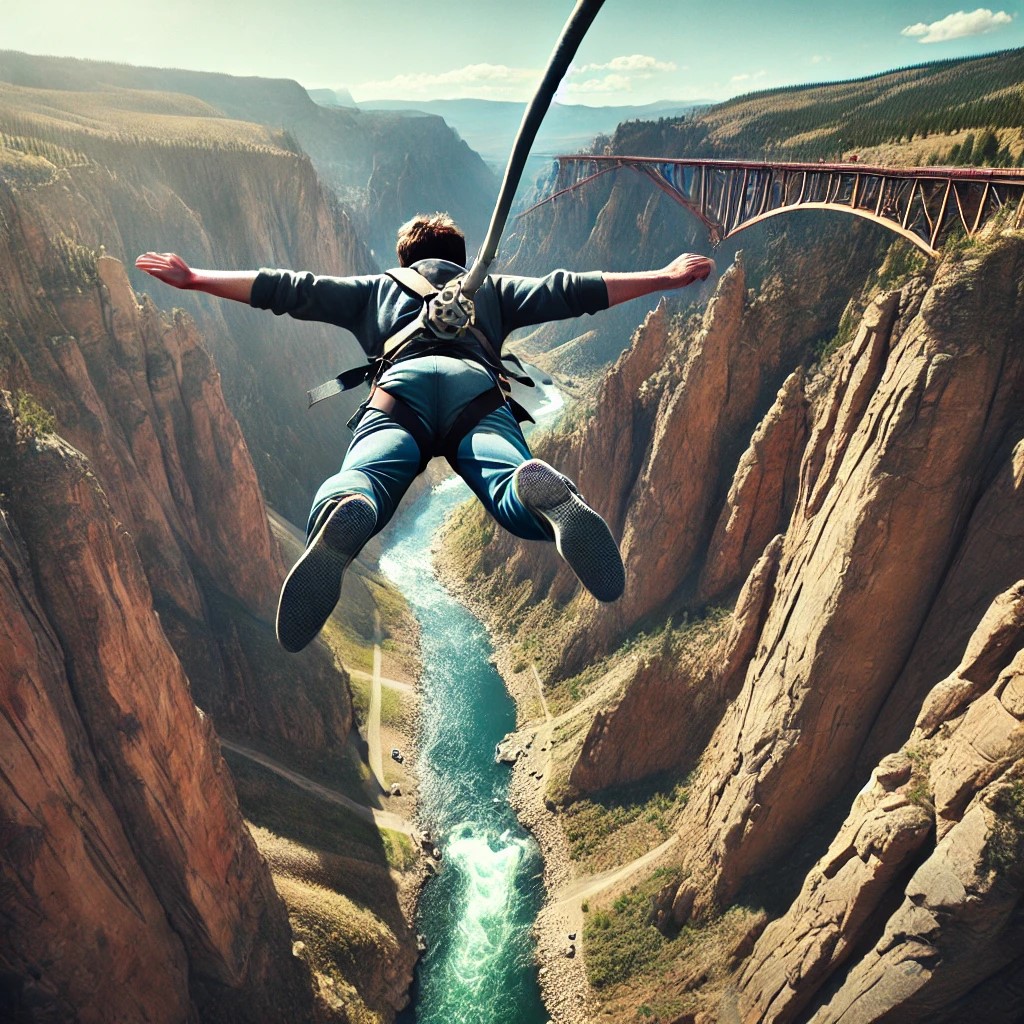
Exploring the Thrills and Legacy of Bungee Jumping
Bungee Jumping is one of the most exhilarating and daring sports in the world. It involves leaping from a high platform while connected to a long elastic cord. This thrilling activity attracts adrenaline junkies and adventure seekers alike. From its cultural origins to its widespread popularity, Bungee Jumping has become a global phenomenon. It has evolved from a traditional rite of passage into a recreational and professional sport. Let’s dive into its history, its growing appeal worldwide, and its impact on society.
The Origin and History of Bungee Jumping
The roots of Bungee Jumping trace back to an ancient ritual practiced by the people of Pentecost Island in Vanuatu. Known as “land diving,” this tradition involved men leaping from tall wooden towers with vines tied to their ankles. It symbolized bravery and was part of a rite of passage. This practice has existed for centuries and continues in Vanuatu today as a cultural heritage.
Modern Bungee Jumping began in 1979 when members of the Oxford University Dangerous Sports Club performed a jump off the Clifton Suspension Bridge in England. Inspired by land diving, they used modern elastic cords. This event garnered significant attention and laid the foundation for the sport’s global emergence. The first commercial Bungee Jumping enterprise was established in New Zealand by A.J. Hackett in the late 1980s. Hackett’s leap off the Eiffel Tower cemented his role as a pioneer in promoting the sport internationally.
Over the decades, the sport has advanced with improved safety measures and innovative jump styles. Today, it remains a symbol of fearlessness and adventure.
Global Popularity and Locations
Bungee Jumping’s appeal spans continents, drawing participants to iconic locations around the globe. Countries like New Zealand, South Africa, Switzerland, and Canada host some of the most renowned jumping spots. The Kawarau Bridge in New Zealand is often considered the birthplace of commercial Bungee Jumping. Meanwhile, the Bloukrans Bridge in South Africa boasts the world’s highest bridge jump at 216 meters.
In Europe, Switzerland’s Verzasca Dam gained fame after featuring in a James Bond movie. The Macau Tower in China offers one of the highest urban jumps. Asia has also embraced the sport, with India, Thailand, and Nepal emerging as hotspots for adventure tourism. In North America, the Rio Grande Bridge in the United States and Whistler in Canada attract thrill-seekers year-round.
Bungee Jumping’s popularity continues to grow as more countries develop safe and accessible jumping sites. It is no longer limited to rugged landscapes; urban towers and bridges also provide thrilling opportunities.
Amateur Bungee Jumping: Opportunities for Youth and Schools
Amateur Bungee Jumping has become a popular recreational activity for youth and beginners. Many adventure parks and recreational centers offer introductory jumps for individuals seeking a controlled yet exciting experience. These facilities often provide specialized equipment and professional supervision, ensuring safety and confidence for first-timers.
In schools, Bungee Jumping is not commonly included in traditional sports programs. However, it has found its way into adventure-based learning curriculums. Camps and outdoor programs often introduce students to simulated Bungee Jumping activities. These programs emphasize teamwork, self-confidence, and overcoming fear.
Youth adventure clubs frequently organize Bungee Jumping excursions, allowing young enthusiasts to experience the sport in a structured environment. By providing training sessions, these clubs help participants understand the basics, including harness fitting and jump techniques. These experiences foster courage and personal growth among participants.
Professional Leagues and Competitions
Professional Bungee Jumping, while niche, has gained traction with the establishment of leagues and competitive events. Organizations like the International Extreme Sports Association (IESA) and the World Bungee Federation (WBF) oversee competitive aspects of the sport.
These events often include freestyle competitions, where participants perform mid-air acrobatics during their jump. Judges evaluate creativity, execution, and overall performance. Precision jumping, another competitive format, challenges participants to hit specific targets after their rebound.
Some regions host annual Bungee Jumping festivals that draw professional jumpers from around the world. For instance, the Extreme Sports Festival in Switzerland features a dedicated Bungee Jumping segment. These events showcase the sport’s athleticism and artistry while fostering camaraderie among enthusiasts.
Despite its smaller competitive scene compared to mainstream sports, Bungee Jumping continues to inspire innovation and global participation. Sponsors and media coverage are gradually increasing, further elevating the sport’s profile.
Political and Social Significance of Bungee Jumping
It holds unique political and social significance in different parts of the world. In countries like New Zealand, it represents a cornerstone of the adventure tourism industry. The revenue generated supports local economies and promotes cultural exchange.
Socially, the sport encourages people to confront their fears and break personal barriers. It has become a metaphor for stepping out of one’s comfort zone. Many charity organizations have utilized Bungee Jumping as a fundraising tool. Participants often jump to support causes, raising awareness and funds for social issues.
In some cases, Bungee Jumping has also been a medium for activism. Protesters have used high-profile jumps to draw attention to environmental or political causes. This unconventional approach underscores the sport’s adaptability as a platform for expression.
Rules and Guidelines for Bungee Jumping
It follows strict rules to ensure safety and an enjoyable experience. Beginners and seasoned jumpers must adhere to these guidelines:
- Health Requirements: Participants should be in good physical health. Conditions such as heart problems or epilepsy may disqualify individuals from jumping.
- Age and Weight Limits: Most operators enforce minimum age and weight restrictions. Typically, participants must weigh between 40 and 150 kilograms.
- Safety Gear: Proper harnessing and equipment checks are mandatory. The elastic cord and all attachments must meet international safety standards.
- Qualified Instructors: Jumps must be supervised by certified professionals. Instructors ensure the equipment is fitted correctly and provide clear instructions.
- Site Inspections: Operators must conduct regular inspections of the jumping platform, cords, and other infrastructure.
- Jump Styles: Participants can choose from various jump styles, such as swan dives or backward jumps. Each style requires specific preparation.
- Legal Permissions: Jumping sites must comply with local regulations. Permits and certifications are often required for operation.
Adhering to these rules minimizes risks and enhances the overall experience. Operators often conduct a detailed briefing before each jump, ensuring participants understand the procedures.
The Future of Bungee Jumping
The future of Bungee Jumping looks promising as technological advancements continue to enhance safety and creativity. Virtual reality (VR) integration is emerging as a trend, allowing participants to experience simulated environments while jumping. This innovation adds an extra layer of excitement to the sport.
Eco-friendly practices are also gaining traction. Many operators are adopting sustainable materials and minimizing their environmental impact. These efforts align with global initiatives to promote responsible tourism.
As the sport gains more recognition, collaborations with other extreme sports are becoming common. Combined events, such as skydiving and Bungee Jumping festivals, are attracting diverse audiences. This cross-pollination of activities is broadening the sport’s appeal and creating new opportunities for enthusiasts.
Conclusion
Bungee Jumping is more than just a sport; it is an experience that challenges both the mind and body. Its journey from ancient land diving rituals to modern-day adventures reflects its enduring allure. With a growing global presence, the sport continues to inspire and unite people across cultures.
Whether as a recreational activity or a professional pursuit, it offers something unique for everyone. By adhering to safety guidelines and embracing innovation, the sport is poised to reach even greater heights. For those seeking an unforgettable adventure, Bungee Jumping remains an unparalleled choice.





